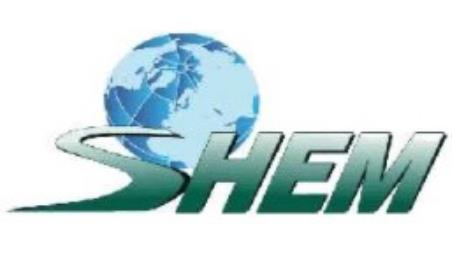Information
-
Audit Title
-
Conducted on
-
Prepared by
-
Location
HOUSEKEEPING / PREMISES CONDITION
-
Are accumulations of wood dust routinely (e.g., monthly) removed from elevated surfaces such as ductwork, roof supports, etc.?
-
Are walking surfaces kept dry or appropriate means taken to assure the surfaces are slip-resistant?
-
Are all spilled hazardous materials or aned up immediately and according to proper procedures?
-
Is a clean up kit with a supply of absorbent materials and appropriate neutralizers located near the area?
-
Is scrap, debris and wasted stored safely and removed from the worksite promptly?
-
Is heavy stock properly and safely secured for storage?
-
Are exit routes clear and unobstructed?
-
Are there no materials or equipment placed, either permanently or temporarily, within the exit route
ELECTRICAL SAFETY
-
Are electrical machinery and appliances grounded?
-
Do extension cords being used have a grounding conductor?
-
Do plug adapters provide necessary ground conductor?
-
Are all disconnecting switches and circuit breakers labeled to indicated their use or the equipment served?
-
Do all interior wiring systems include provisions for grounding metal parts of electrical raceways, equipment and enclosures?
-
Are all electrical conduits, raceways and enclosures securely fastened in place?
-
Are all energized parts of electrical circuits and equipment guarded against a accidental contact by proper cabinets or enclosures?
-
Is sufficient access and working space provided and maintained about all electrical equipment to permit ready and safe operations and maintenance?
-
Are all unused openings (including knockouts) in electrical enclosures and fittings closed with appropriate covers, plugs or plates?
-
Are electrical enclosures such as switches, receptacles, and junction boxes, provided with tight fitting covers or plates?
-
Are extension cords used outdoors equipped with GFCI protection?
CHEMICAL SAFETY
-
Are flammable liquids properly stored in appropriate cabinets when not in use?
-
When flammable or toxic chemicals are in use, is the ventilation adequate to ensure that vapor concentrations do not buildup in the shop?
-
Is the flammable storage cabinet only used to store flammable and combustible material, and not ordinary storage?
-
Are all spilled hazardous materials or liquids, cleaned up immediately and according to proper procedures?
-
Are compressed gas cylinders stored in an outside roofed cage or otherwise secured against tipping over?
-
Are compressed gas cylinders, such as oxygen separated from other flammable compressed gases by at least 20 ft (6 m) or a ½ hr. rated firewall?
-
Are “No Smoking – No Ignition Sources” signs posted where flammable materials are stored or used, both indoors and outdoors?
-
Are emergency eye wash facilities that provide a flow rate of 0.4 liters for 15 minutes located within the work area where employees are exposed to corrosive materials, or other chemicals hazardous to the eyes?
-
Are emergency shower facilities that provide a flow rate of 75.7 liters per minute (20 gpm) for 15 minutes located within the work area where employees are exposed to corrosive materials, or other chemicals hazardous to the eyes or other parts of the body?
-
Are emergency eye wash and shower stations activated monthly for a period long enough to verify operation and ensure flushing fluid is available?
-
Are emergency eye wash and shower equipment inspected annually?
PERSONAL PROTECTIVE EQUIPMENT
-
Are approved safety glasses required to be worn at all times in areas where there is a risk of eye injuries form flying chips, splinters, sparks and other solid materials?
-
Are protective goggles or face shields worn over safety glasses where there is any danger of chemical splashes?
-
Are hard hats provided and worn where the danger of hitting the head exists?
-
Are hard hats free of damage to the shell and suspension system?
-
Is appropriate foot protection required where there is the risk of foot injuries from falling objects, crushing, or hot, corrosive, or toxic substances?
-
Are abrasion-resistant gloves worn for handling materials with sharp edges, splinters or other surfaces that can cause severe cuts, lacerations, abrasions or punctures?
-
Are chemical-resistant gloves worn to prevent skin contact with harmful chemicals? (e.g., solvent-based glues, paints and thinners, fuels, acids)
-
s hearing protection (e.g., ear plugs or muffs) properly worn when workplace noise levels exceed the Department’s occupational exposure limits?
-
Is there a schedule to replace the cartridges in chemical respirators (e.g., monthly)?
-
Is all protective equipment maintained and stored in a clean, functioning condition and ready for use?
MACHINE GUARDING AND SAFETY
-
Are appropriate guarding methods provided to protect workers from hazards created by the point of operation, ingoing nip points, rotating parts, flying chips, and sparks?
-
Are push sticks or blocks available and used for saws and other cutting equipment to feed smaller pieces of stock?
-
Are provisions made to prevent machines from automatically restarting when power is restored after a power interruption?
-
Are all (a) moving chalking and gears and (b) pulleys and belts that are within 7 feet (2.1 meters) of the floor or working level properly guarded?
-
Are fan blades protected with a guard having openings no larger than 1/2inch (1.3cm), when operating within 7 feet (2.1meters) from the floor?
-
Are any foot-operated switches guarded or located to prevent accidental actuation by personnel or falling objects?
-
Is equipment and machinery securely anchored to prevent tipping or other movement during operation that could result on personal injury?
-
Are manually operated valves and switches controlling the operation of equipment and machines clearly identified and readily accessible?
-
Is there a power shut-off switch within reach of the operator's position at each machine?
-
Does the supervisor prohibit loose clothing, ties, long hair, and jewelry that may catch in moving machinery?
ADDITIONAL COMMENTS
-
Are there first aid kits available?
-
SIGNATURE
-
Auditor's signature
-
Select date











